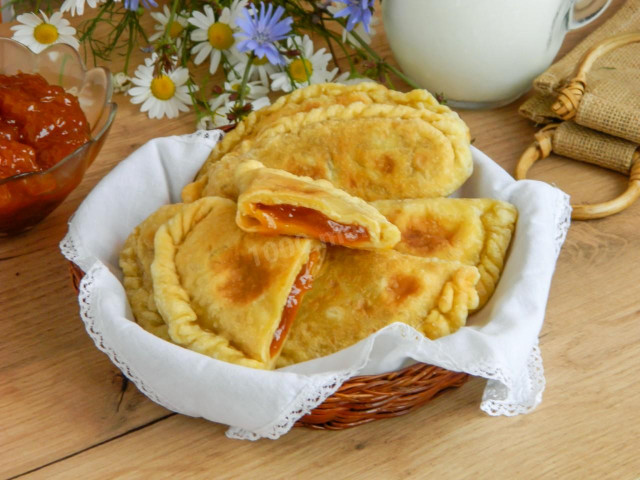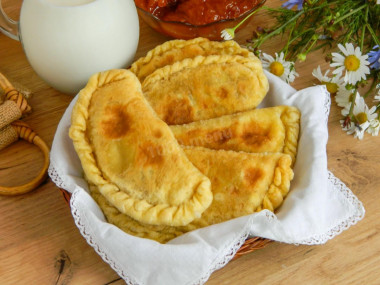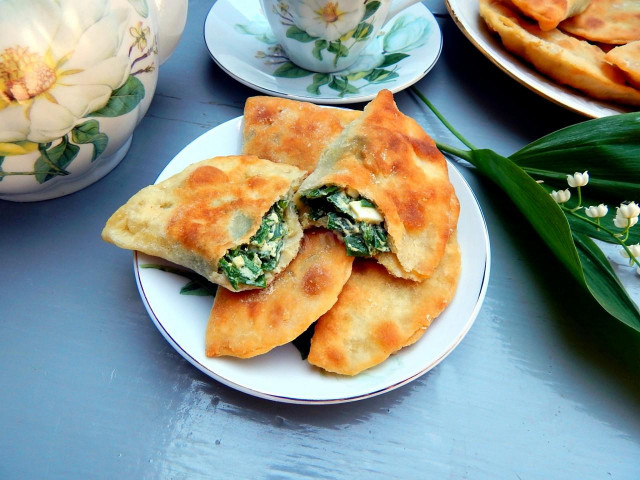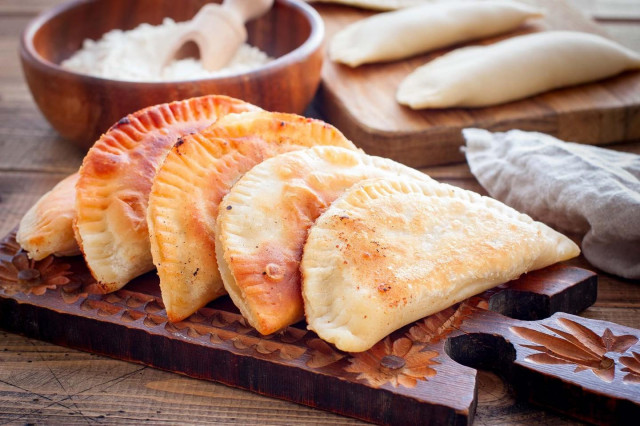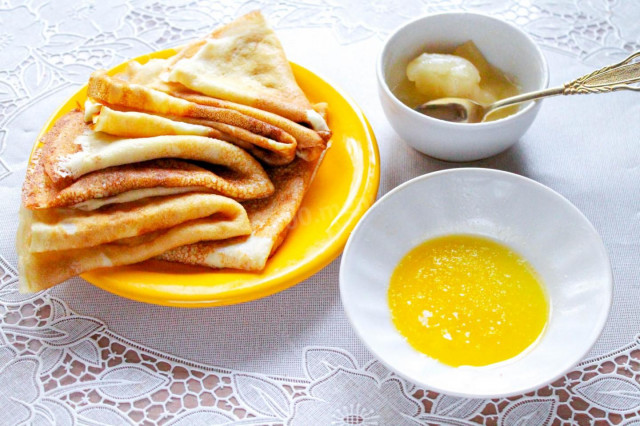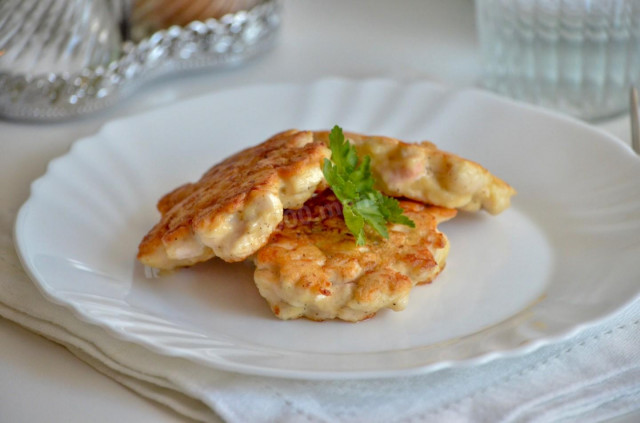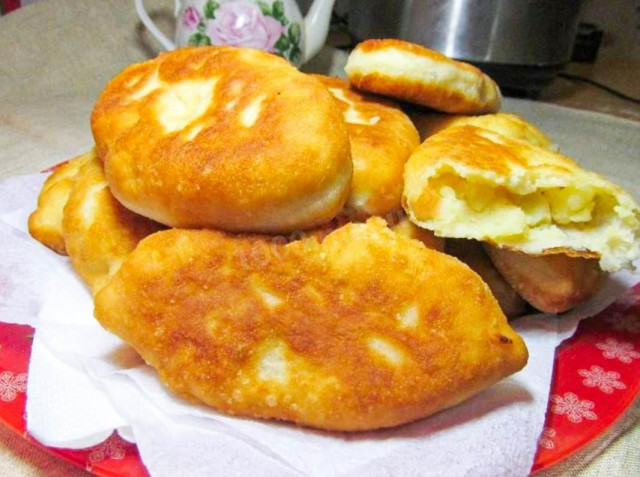Composition / ingredients
Step-by-step cooking
Step 1:
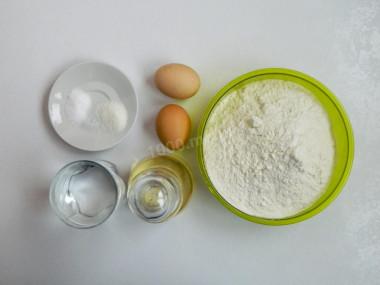
How to make pies on water? Prepare the necessary ingredients. Use flour of the highest grade. Large eggs will do. An hour before the start of cooking, take them out of the refrigerator. In order for the dough to be successful, they must be at room temperature. Take the jam that you like best.
Step 2:
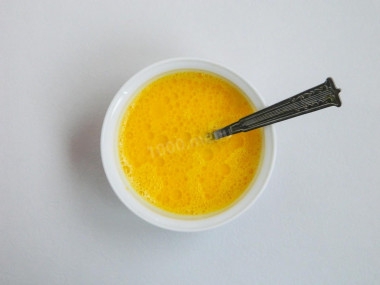
Start preparing the dough. Wash the eggs with soap, dry them with a towel or napkin. Take a deep bowl in which it will be convenient to beat eggs and mix liquid ingredients. Whisk them with sugar and salt. It is not necessary to beat until the foam appears. Adding salt improves the taste and simplifies the whipping process. Pour in water at room temperature and whisk again until the sugar and salt dissolve. Add 2 tablespoons of vegetable oil and mix.
Step 3:
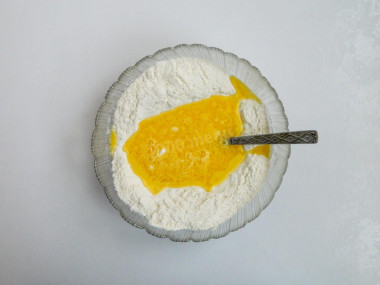
To knead the dough, take a deep bowl in which it will be convenient to mix dry and liquid ingredients. Sift half of the flour into it. It must be sifted to remove small debris and saturate the dough with oxygen and it was airy. Make a recess in the middle of the flour and pour the liquid component of the dough into it. Be sure to add the liquid component to the dry one, and not vice versa. So the dough will turn out the most successful.
Step 4:

Starting from the middle of the bowl, knead the dough with a spoon in one direction, gradually collecting flour from the edges. When the flour in the bowl runs out, add the remaining in small portions until you achieve the desired consistency. When it becomes difficult to knead with a spoon, start doing it with your hands.
Step 5:
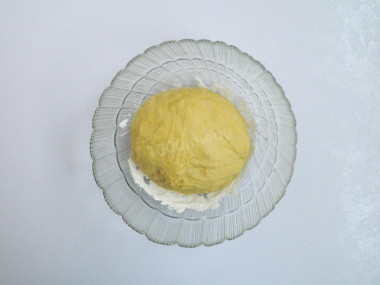
Knead the dough thoroughly. It should turn out to be slightly elastic, but tender and stick to your hands a little. Do not make the dough too steep so that it does not turn out to be rubbery. Cover the dough with a towel or cling film so that it does not dry and does not chafe. Leave it to infuse so that the gluten will disperse well and it will be easier to work with it.
Step 6:

Any filling for such pies is suitable. Only it should not be too liquid, so as not to leak out when frying. I took thick apricot jam.
Step 7:
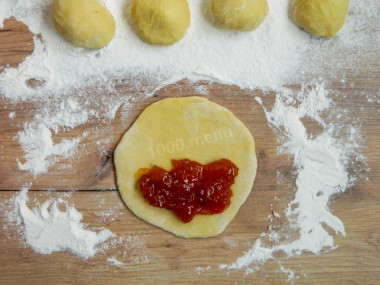
Divide the dough into 10 pieces, roll them into balls. Place on a work surface sprinkled with flour. Form the pies. Make pies by greasing your hands with butter or sprinkling with flour. But keep in mind that if there is a lot of flour on the pie, it will burn during the frying process. Roll out the dough into a round layer 0.3-0.5 cm thick. Put the filling on one side, leaving the dough around the edges for pinching. Put the amount of filling to your liking.
Step 8:
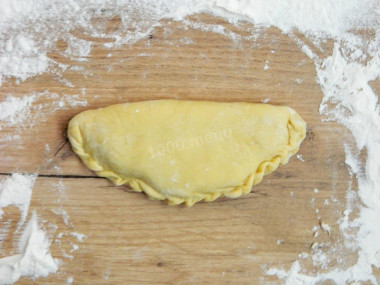
Cover the filling with the second half of the dough and gently pinch the dough around the edge.
Step 9:
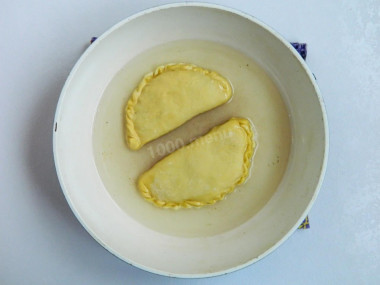
Whatever frying pan you take for frying pies, pour enough oil so that the pies drown in it by half. Heat the oil over medium heat so as not to get burned. In order for the oil not to splash, you can add a pinch of salt to it, it will absorb moisture, if there is any. Fry in a frying pan on both sides until golden brown. Transfer the finished pies to a dish covered with paper towels to remove excess oil.
From the specified number of products, ten pies are obtained.
The dough on water without yeast and soda turns out heavier and less lush. Therefore, it is better to eat such pies hot, immediately after cooking.
Instead of sugar, you can use a sweetener that is not afraid of heat treatment.
Use oil with a high smoking temperature for frying! Any oils are useful only until a certain temperature is reached - the point of smoking, at which the oil begins to burn and toxic substances, including carcinogens, are formed in it.
Unrefined oils, with rare exceptions, have a low smoking point. There are a lot of unfiltered organic particles in them, which quickly begin to burn.
Refined oils are more resistant to heating, and their smoking point is higher. Make sure that you use oil with a high smoke point. The most common of the oils with a high smoking point: refined varieties of sunflower, olive and grape.
Make it a rule that the amount of flour is never determined in advance when preparing flour and bread products! This indicator will always fluctuate, since flour can be of different humidity, differ in the degree of grinding and the level of gluten, and other indicators, which inevitably affects its ability to bind to the liquid mixture in the dough. Since it is impossible to make a laboratory test at home to determine all the parameters and indicators of flour, we recommend acting on the principle of "flour in water", that is, take liquids exactly according to the recipe, and add flour to the liquid component not all at once, but in parts, achieving the desired consistency (while flour may take a little more or on the contrary, less than in the recipe). Thanks to this technique, the proportions of the ingredients are more accurately preserved and the quality of the dough is not lost.
Caloric content of the products possible in the composition of the dish
- Granulated sugar - 398 kcal/100g
- Sugar - 398 kcal/100g
- Vegetable oil - 873 kcal/100g
- Salt - 0 kcal/100g
- Water - 0 kcal/100g
- Wheat flour - 325 kcal/100g
- Chicken egg - 80 kcal/100g
- Any jam - 271 kcal/100g

